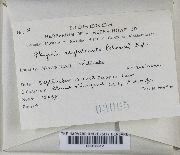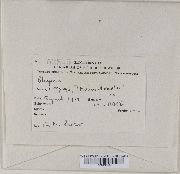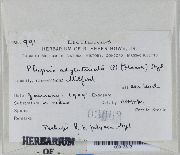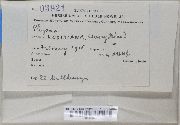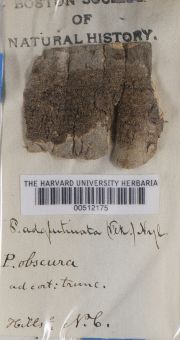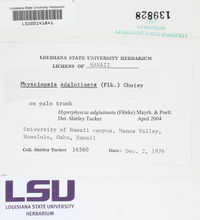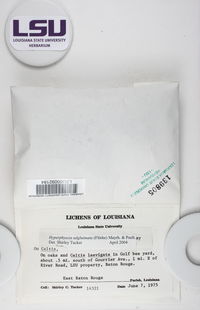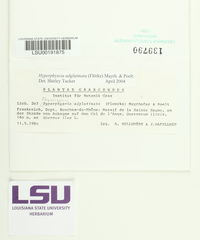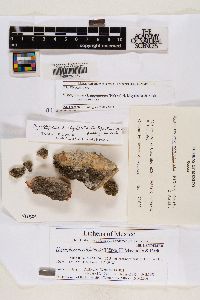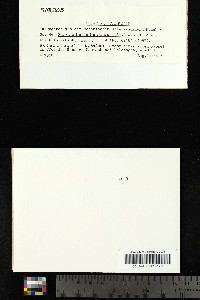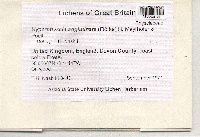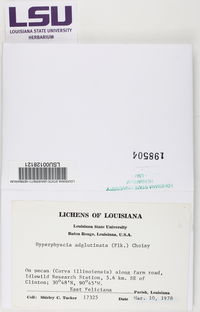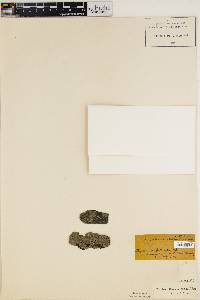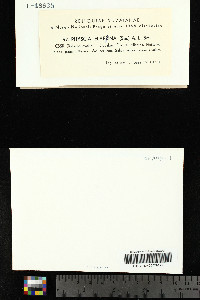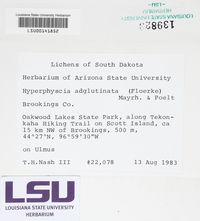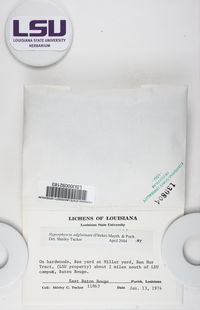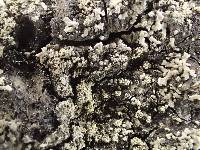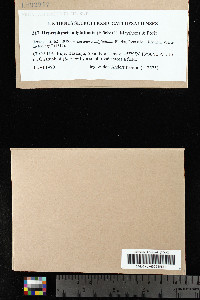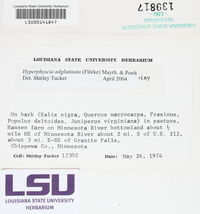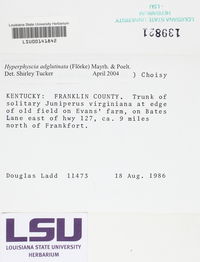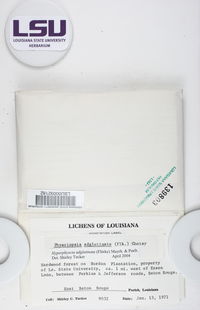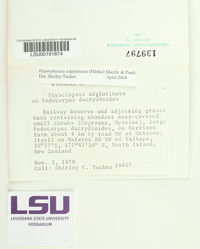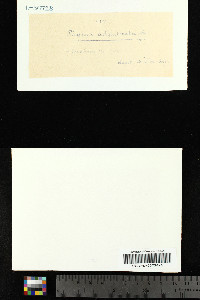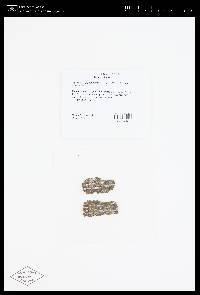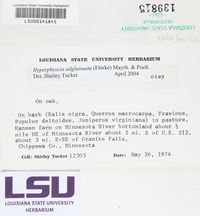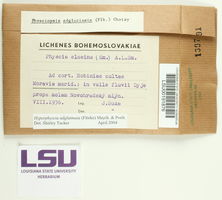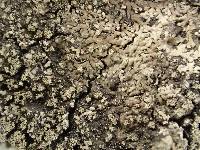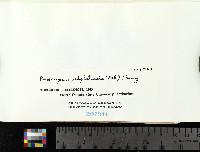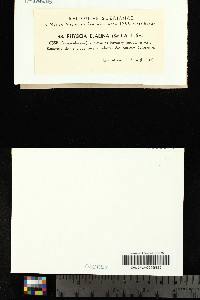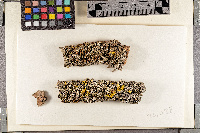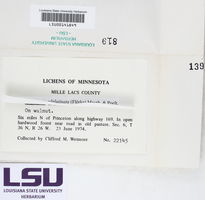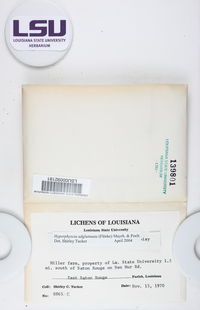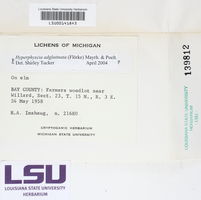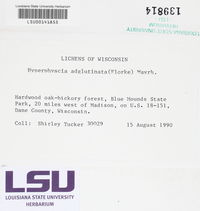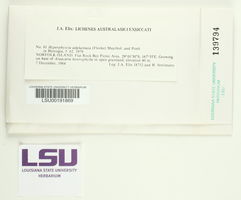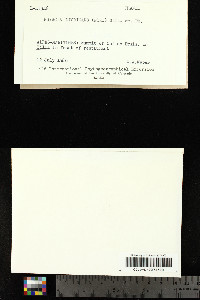
Consortium of Lichen Herbaria
- building a Global Consortium of Bryophytes and Lichens as keystones of cryptobiotic communities -
- Home
- Search
- Images
- Species Checklists
- US States: O-Z >
- US National Parks
- Central America
- South America
- US National Parks
- Southern Subpolar Region
|
|
|
|
Family: Physciaceae
[Dimelaena adglutinata (Flörke) Trevis., moreHagenia adglutinata (Flörke) Bagl. & Carestia, Hagenia elaeina (Sm.) Bagl., Hyperphyscia adglutinata var. adglutinata (Flörke) H. Mayrhofer & Poelt, Imbricaria adglutinata (Flörke) Chevall., Parmelia adglutinata (Flörke) Flörke, Parmelia obscura var. adglutinata (Flörke) Schaer., Physcia adglutinata (Flörke) Nyl., Physcia adglutinata f. adglutinata (Flörke) Nyl., Physcia adglutinata f. sorediata Nyl., Physcia adglutinata subsp. adglutinata (Flörke) Nyl., Physcia adglutinata var. adglutinata (Flörke) Nyl., Physcia adglutinata var. lepraeformis (Flörke) Zahlbr., Physcia elaeina (Sm.) A.L. Sm., Physcia elaeina f. albida B. de Lesd., Physcia elaeina f. elaeina (Sm.) A.L. Sm., Physcia elaeina f. pyrithrocardia (Müll. Arg.) J.W. Thomson, Physcia elaeina f. tenuissima Nádv., Physcia elaeina var. elaeina (Sm.) A.L. Sm., Physcia elaeina var. subvirella Nyl., Physciopsis adglutinata (Flörke) M. Choisy, Physciopsis elaeina (Sm.) Poelt, Physciopsis elaeina var. elaeina (Sm.) Poelt, Physciopsis elaeina var. pyrithrocardia (Müll. Arg.) D.D. Awasthi & Kr.P. Singh, Squamaria elaeina (Sm.) Hook., Xanthoria adglutinata (Flörke) Horw., Xanthoria adglutinata f. adglutinata (Flörke) Horw., Xanthoria adglutinata f. sorediata (Nyl.) Horw.] |
Nash, T.H., Ryan, B.D., Gries, C., Bungartz, F., (eds.) 2002. Lichen Flora of the Greater Sonoran Desert Region. Vol 1. Thallus: foliose, orbicular to irregular (adjacent thalli becoming confluent), small, less than 2 cm diam., very tightly adnate, densely lobate lobes: narrow, 0.3-0.7 (-2) mm wide, radiating, usually plane, margins occasionally black, tips sometimes ascending upper surface: gray- brown to brown or dark brown, darker at lobe-tips, epruinose or weakly pruinose, sorediate soredia: sparse or abundant, granular, laminal in soralia that sometimes arise from small protrusions or lobules on the lobe surface, in maculiform or capitate soralia; isidia absent medulla: white lower surface: blackish centrally, paler marginally whitish to pale brownish, rarely dark gray, erhizinate or weakly rhizinate Apothecia: very rare, c. 1 mm diam., thalline margin entire ascospores: brown, ellipsoid, 1-septate, Pachysporaria to Physcia type, 15-23 x 7-11 µm Pycnidia: ± common, inserted with black weakly protruding tips conidia: filiform, 15-20 x 0..5-1 µm Spot tests: cortex and medulla K- C-, KC-, P- Secondary metabolites: none detected. World distribution: North America, Europe, East Africa and South America Sonoran distribution: relatively common in Arizona, southern California and Sonora; less common in Chihuahua, Baja California and Baja California Sur. Notes: Traces of skyrin are reported in East African populations (Moberg 1987), but it has not been observed in Sonoran specimens. It needs to be carefully distinguished from adnate Phaeophyscia species that have better developed rhizines and a more clearly developed lower cortex. |
|
|
|
Powered by Symbiota




